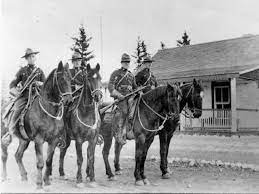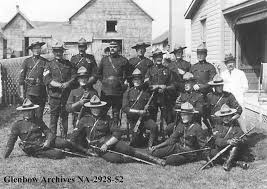The schooner sailed for Hudson Bay, and on the trip had numerous miraculous escapes from icebergs and ice floes, and was nearly wrecked several times. Finally Chesterfield inlet was reached. The party pressed inland, and for three years scoured a vast land some half a million square miles in area in a vain search for the Eskimo murderers. They did, however, find the last hut in which the explorers had lived, and a diary belonging to Radford. In the late summer of 1916, the patrol’s three years of duty being up, they started back for civilization, coming overland to the Pas Mission, where the Government Hudson Bay Railroad leads to civilization. On January 28th they arrived back in Regina.
Inspector French then set out, but he has returned after an unsuccessful search of three years. The fact is the police have only the vaguest clues and no accurate description to work upon. Furthermore a good deal of sympathy is felt for the unknown murderers, as according to rumor among the native people (and rumor is all powerful in the Northland) the white men were to blame.
It is expected that the hunt will be abandoned, but it has already cost the Canadian Government $150,000 and entailed journeys of many thousand miles into unknown territory. It has resulted in filling in many blank spaces on the maps, and for that reason alone cannot be described as altogether a failure. Scores of unknown Eskimo settlements were discovered and much valuable data regarding their life and habits secured. Indeed, the Canadian Government are now arranging to send reindeer to these people, as they were found to be very short of food through the disappearance of the whale and the seal. And it is the Mounted Police who will transport the reindeer to their country and teach them how to look after them and rear them.

To-day the Mounted Police have strong bodies, ranging from a hundred to one hundred and seventy-five men, posted in the principal cities of Western Canada. The conservative element of the population speak of them as Canada’s bulwark against Bolshevism. The radicals call them an entirely different name. In the great labor crises in Winnipeg in the summer of 1919 the Mounted Police and striking laborers fought a pitched battle on the main street of that city, when several men were killed, and dozens wounded.
The past history of the Mounted Police has been a brilliant one. Probably the principal secret of the red-coated riders’ success was the fact that they always recognized the Indians’ rights when adjusting difficulties that arose in the early days. The Indians knew they would get a square deal.
Thus, the massacres on both sides which marked the whites’ dealings with the Indians in Eastern Canada and the United States in the early days were avoided. No doubt the force’s future record will be a worthy one, and through them we shall learn something of the secrets of the yet untrodden wilderness of the Far North. In this work alone they have proved themselves equal to the great explorers of the past.
– 30 –
